
Spider
Spider
Spider
When you think of spiders, you might think of the creatures that inspired ‘Spider-Man’. Spider-Man is cool and popular. But many people are afraid of real spiders. They have eight legs and a strange shape, so you don’t want to get close to them. Spider webs are also annoying, and cleaning them is hard. But spiders eat pests like cockroaches. What kind of animals are spiders? Let’s find out together!
Spider Basic Infomation
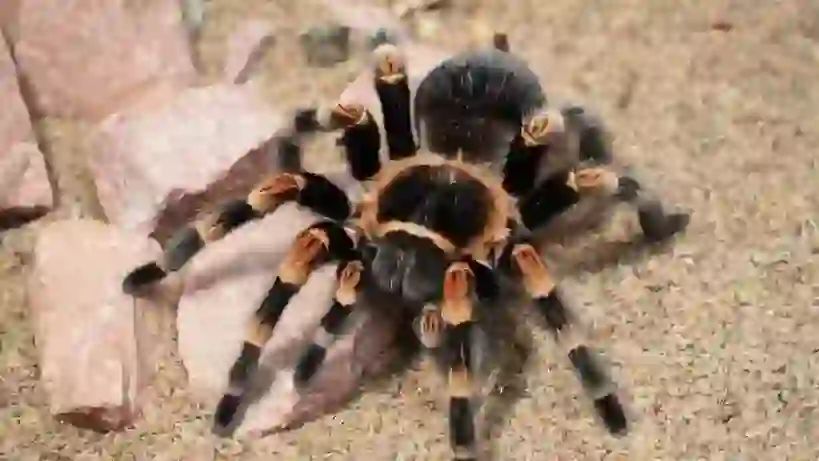
Phylum Arthropoda - Subphylum Chelicerata - Class Arachnida - Order Araneae The largest species: Leblon Giant Ground Spider, body length: about 10 cm, body weight: about 175g The smallest species: Patu digua, body length: about 0.5 to 2 mm, body weight: unknown Spiders are widely distributed around the world. There are 40,000 species of spiders, and about 1,200 of them are found in Japan. There are quite a few species living in Japan alone.
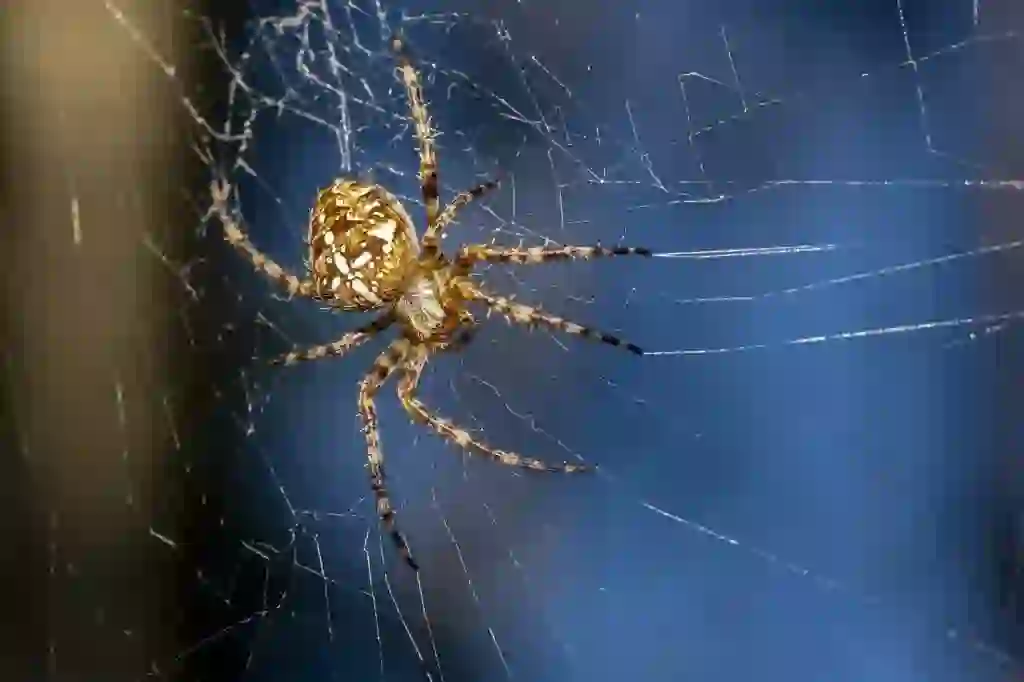
Spider Habitats
Spider habitats can be divided into three groups.
1) Web-building spiders Species that use silk to build webs in human homes or on plants.
2) Wandering spiders Species that move around and temporarily live under plant leaves, fallen leaves, or stones.
3) Ground-dwelling spiders Species that dig burrows and live in the ground.
The common perception is that all spiders build webs with silk. However, it turns out that not all spiders build their nests with silk.
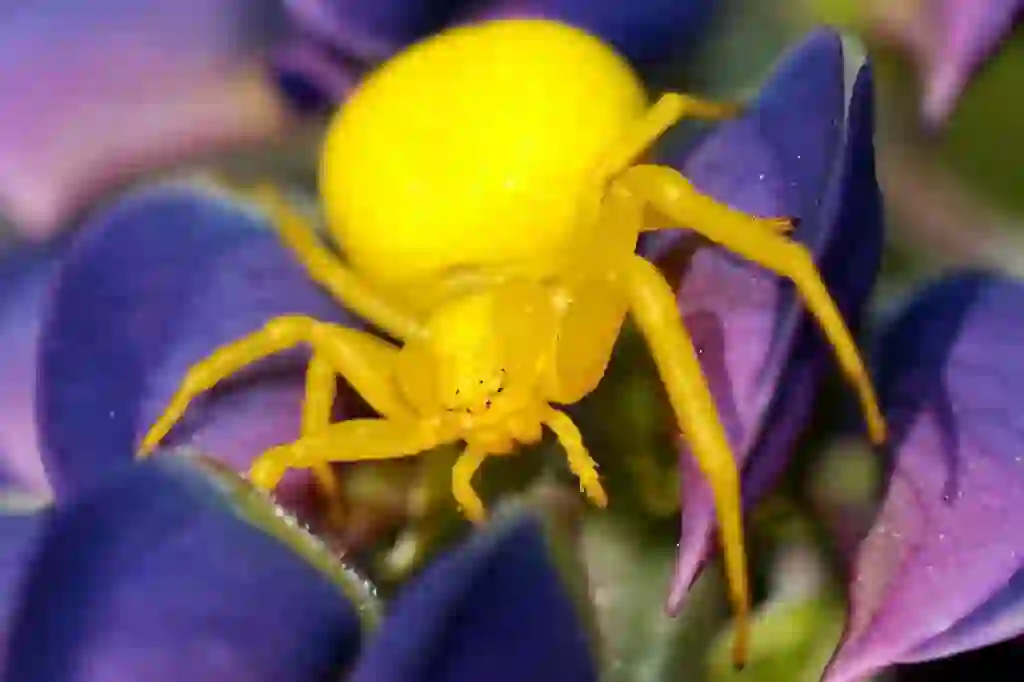
Spider Reproduction
Did you know that reproduction is a life-threatening act for male spiders? Spiders tend to have larger females than males. Moreover, female spiders have aggressive temperaments. Therefore, if a male approaches at the wrong time, he may be mistaken for food and eaten. Females are overwhelmingly stronger creatures. Most living creatures reproduce by mating. In the case of spiders, they reproduce through a process called 'mating', not mating. Males use a part of their head that resembles antennae, called pedipalps, for this process. They store sperm in these pedipalps and insert them into the female's reproductive organ. After mating, the male detaches the pedipalps and plugs the female's reproductive organ. This behavior ensures that no other males can mate with the female, thus ensuring his progeny. Since the male loses his pedipalps, he can no longer mate. There are differences in post-mating behavior among spider species. For example, the spider 'Kitakogane gumamashi' performs a surprising action. After mating, the male of 'Kitakogane gumamashi' destroys the female's reproductive organ. The reason for this is to prevent other males from mating with her. Earlier, the male sacrificed his pedipalps, but this spider sacrifices the female's body. It shows the desperation of the male to pass on his genes. Not all males make it to mating. In the case of spiders, since the female is stronger, the male might be eaten before he can mate. It is essential for the male not to die before mating. Therefore, he waits for a safe time to approach the female. There are two ideal times for a male to approach a female. 1) Just after molting Molting consumes a lot of energy, so right after molting, the female's movements are slower than usual. Slower movements of the female mean there is a higher chance for the male to mate and escape without being caught. 2) While the female is eating Females have a strong appetite, so once they start eating, they get absorbed in it. While the female is distracted by the food, there is time for the male to finish mating and escape. For a male spider, mating is a life-or-death situation, so timing is crucial. Some male spiders bind the female with silk to mate more safely.

Spider Parenting
How does a female spider that has successfully mated lay eggs and raise her young? Not all spiders exhibit the same behaviors. There are significant differences in egg-laying locations and parenting methods among spider species. Although it is not possible to explain all types, here are five types of parenting styles. 1) The type that dies while protecting the eggs Chooses a place not exposed to rain, lays eggs, and covers them with silk. The mother spider covers the eggs to protect them but unfortunately does not survive the winter and dies. This type of spider is commonly seen in Japan, such as the 'Jorougumo'. It is sad that the mother cannot see her children grow up. 2) The type that watches over her children until they grow up lays eggs under the leaves of plants and protects them with silk. The young feed on the leftovers of their mother's food after hatching. The mother spider continues to watch over them until they are independent. 3) The type that carries eggs while moving After laying and wrapping the eggs in silk, the mother carries them in her mouth or attaches them to her rear. After the young hatch, some mothers continue to watch over them, while others carry their young on their backs and keep moving. 4) The type where the young eat the mother Eggs are laid and wrapped in silk under the leaves of plants. Until the young spiders complete their first molt, they live together with the mother. An important role of the mother is not only parenting but also becoming 'food' for the young after they molt. This sacrifice by the mother might be her own way of showing love by nurturing her offspring. 5) The type that feeds her young with milk After hatching, the mother spider feeds her young a secretion from her body. This secretion is actually 'milk'. Spider milk contains about four times the protein of cow's milk. Perhaps because they like the milk, this type of spider tends to take longer to become independent compared to other spiders. This type of spider is quite rare, and this behavior was discovered by Chinese researchers in 2018. The species is known as 'Toxeus magnus', a type of jumping spider.

Unusual Types of Pets
Spiders, with their unique style, beauty, and strength, captivate some people. Although it is not advisable to touch spiders, they can be kept as ornamental pets. Let's explore how to keep them together!
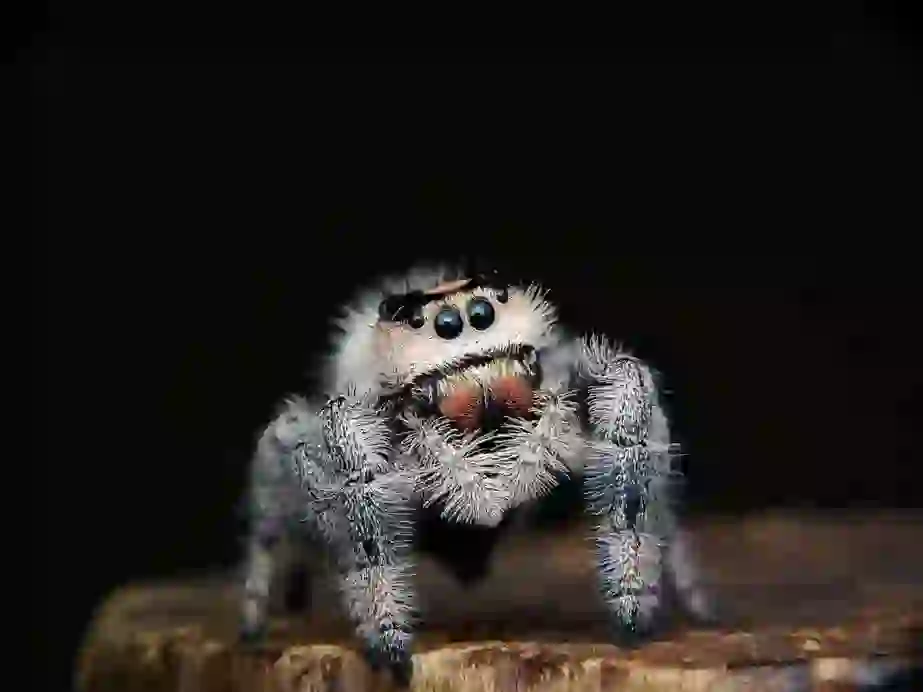
What Types of Spiders Can Be Kept?
The types of spiders that can be kept are all 'Tarantulas'. The name 'Tarantula' is well-known, and many people may have heard of it. The temperament of tarantulas is generally mild, so they do not attack on their own. However, if you do something that the spider dislikes, there is a possibility of being attacked. Here is a list of tarantulas that can be kept: - Mexican Redknee - Chilean Common - Brazilian Black - Santarem Pink-haired - Gooty Sapphire Ornamental - Leblon Giant Ground Spider - Usambara Orange Baboon - Malaysian Earth Tiger
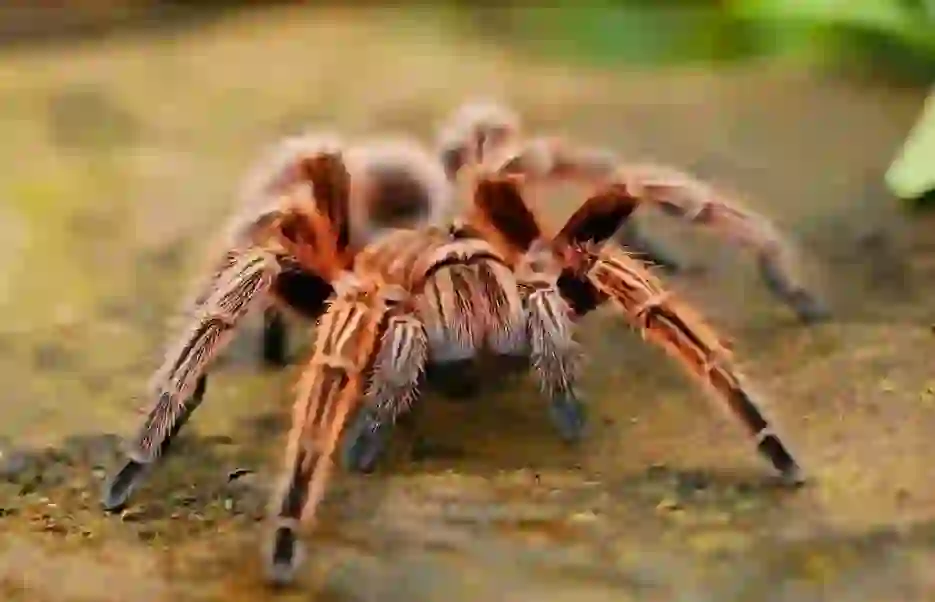
What Should Be Given as Food?
Please give insects sold in pet shops. There are three types of insects commonly sold: - Cricket - Cockroach - Mealworm Insects are sold by size, so you might wonder which size to buy. Here's a guideline to remember: Check the size of the spider you are keeping and choose an insect about one-third of its size. As the spider grows, you will need to adjust the size of the insects accordingly. The frequency of feeding should be about twice a week. Give enough food so that there is no leftover.
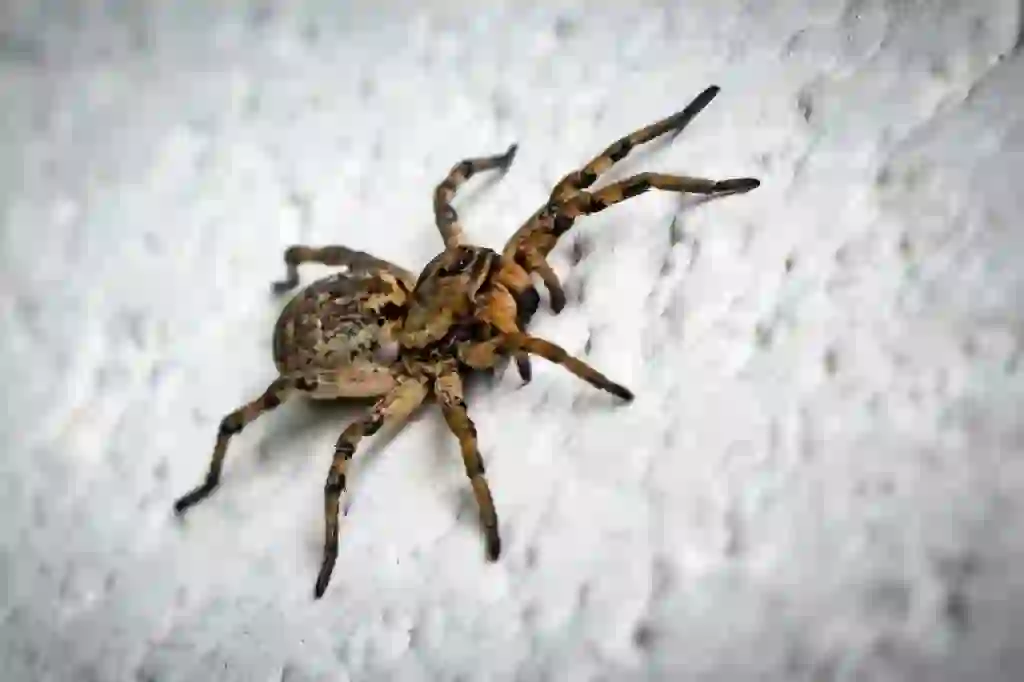
About the Breeding Environment
- Breeding Case Choose a case about three times the size of the spider you are keeping. - Substrate Please lay a substrate like coconut husk in the case. - Water Dish Since tarantulas take a lot of water, please install a water dish. To prevent spilling, it is recommended to use a dish for reptiles. - Shelter It is not absolutely necessary, but since they naturally live in hiding, providing an environment close to nature may please them. - Panel Heater Use a panel heater to warm them during the cold season. - Thermometer Keep the temperature at about 25-28°C as it is suitable for tarantulas, and check it with a thermometer.
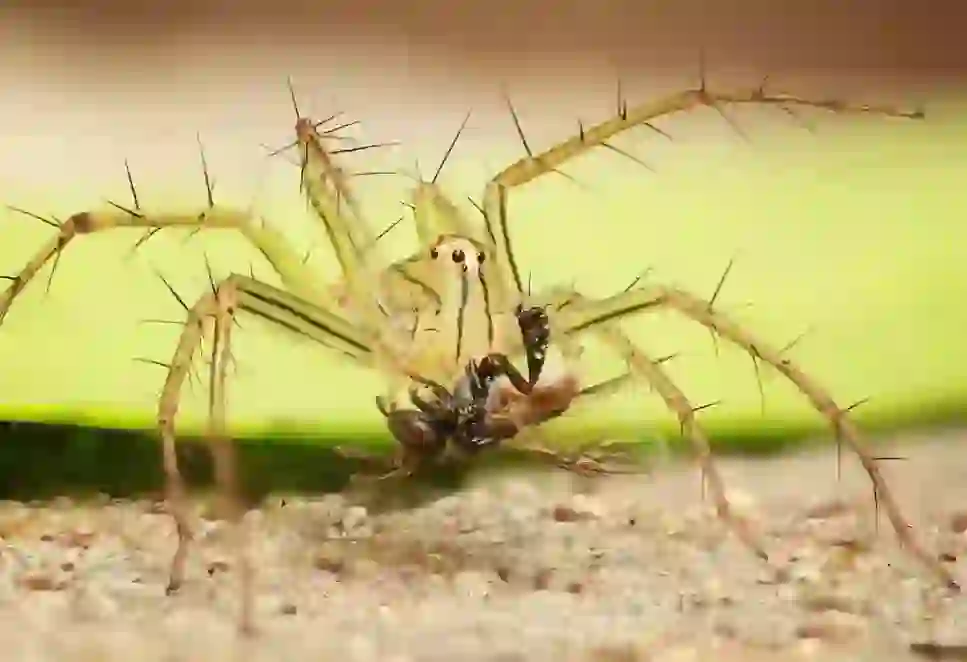
Three Points to Note When Keeping Spiders
1) Take measures to prevent the spider from escaping. Some spiders are very quick. When opening the lid for cleaning or feeding, the spider may quickly escape. If it escapes, it is difficult to find and catch it. To prevent this, consider the size of the case or keep it in a room with few objects beforehand.
2) Be careful not to drop the spider. Spiders are surprisingly delicate creatures. If they escape and fall from a high place, they might die. You might not expect it because they seem to land well, but there are spiders that have died in such accidents.
3) Be careful with spider venom. Most tarantula species have relatively weak venom. How weak? If you get touched by their urticating hairs or bitten, the swelling usually subsides within a few days. Just because the venom is weak doesn't mean you can handle tarantulas carelessly. This is because even a weak venom can cause an allergic reaction. In fact, there have been cases where people have died from anaphylactic shock caused by such reactions. The potential for an allergic reaction is unpredictable. Be cautious with spider venom while keeping them.
Spider Q&A

Where does the spider get its name?
They are called “Spider” in English, but in Japanese they are called “kumo”. This time, we will introduce why they are called kumo in Japanese and the origin of the name. There are many theories about the origin of the name kumo. ・A theory that it became kumo from the sound change of the part “kumu”, which means “to make a nest”. ・A theory that it became kumo from the sound change of the part “komoru”, which means “to hide in a nest”. ・A theory that they were called “sukumimori”, which means “nest-making insect”, and the word kumo was created from its pronunciation. The origin of the name is all related to the spider’s “nest”. Maybe there were many web-building spiders in the past. Spiders are written as “蜘蛛” in kanji. This kanji is used because in China they write spider as “蜘蛛(chichu)”. In Japan, it became established by using the kanji as it is. We will also explain the meaning of the kanji. ・蜘→虫+知 “知” means smart or intelligent. ・蛛→虫+朱 “朱” means to suck the red blood of the captured insect.

Why do spiders live there?
Spider habitats are divided into three groups. The difference in their habitats also affects how they capture their prey. 1)Web-building spiders. They can catch creatures by making them stick to their nests made of silk. Therefore, they choose places where there are many prey to make their webs. By the way, if they make their webs in the same place even if you destroy them, there may be many insects living there. They will not move as long as there is food, so it is faster to get rid of the spiders by exterminating the insects first. 2)Wandering spiders. They are spiders that do not stay in one place because they move around looking for food. The places they use as temporary habitats are under leaves or stones. They not only hide themselves, but also find prey hiding in such places. 3)Burrowing spiders. They dig holes in the ground and make burrows. Their method of capturing prey is to set up sensor threads near their nests so that they can tell when a creature approaches. When the sensor reacts, they go to catch the prey and paralyze it with venom before delivering the final blow. If they eat a large prey, they can go without eating for a month.

What do spiders eat?
Wild spiders eat insects and small reptiles. The types of insects they can catch are different depending on whether they make webs or wander around. In the case of web-making spiders, they do not go to get their prey themselves, but wait for them to get stuck in their webs. Therefore, they can eat flying insects such as flies, butterflies, and moths. In the case of wandering spiders, they have to walk around and capture their prey themselves. It is difficult to catch flying insects, but they can catch insects such as cockroaches and reptiles such as small frogs. In the case of large spiders, they sometimes eat bird chicks or baby mice.

How are cobwebs made?
Spiders use the silk they make themselves to make webs. There are different types of silk they can produce, and some spiders can use up to six different types of silk. They use two types of silk to make webs. The difference between the two types of silk is whether they are sticky or not. The silk that radiates from the center is called “vertical silk” and uses non-sticky silk. The role of vertical silk is to provide a foothold for the spider to move.
The silk that is stretched in a circular shape against the vertical silk is called “horizontal silk” and uses sticky silk. The role of horizontal silk is to catch and hold prey with sticky silk. In the center of the web, there is only vertical silk and no horizontal silk. The reason for this is that it is a space for the spider, the owner of the web. Since it is not a place to catch prey, horizontal silk is not necessary. The pattern of the web varies depending on the type of spider and has its own personality. If you spray water on the web with a mist, the pattern becomes easier to see and the difference becomes clearer. If you are interested, please compare them.

What kind of creatures are natural enemies of spiders?
Spiders have many natural enemies that live close to us. Among them, the most dangerous for spiders are “wasps”. They are formidable enemies not only for small spiders, but also for large spiders like tarantulas. The reason why wasps are dangerous is because their attack method is terrifying. That method is to lay eggs on spiders and parasitize them. When the wasp eggs hatch, the larvae eat the spider’s body from the inside. They attack in the same way even if the opponent is a tarantula. It is scary to think that they are attacked from the inside. Here are some other natural enemies of spiders. ・Spiders. Spiders cannibalize each other, so they have to be careful even with their own kind. ・Birds. They easily pick up and eat spiders with their beaks.
・Bats. They hunt in the same places as spiders, so they are like rivals.
・Lizards. They catch and eat wandering spiders.
・Wasps (parasitic wasps and attacking wasps). They are divided into two types: those that lay eggs on spiders and parasitize them, and those that anesthetize them with poison and use them as food for their larvae. ・Flies (parasitic flies). They lay eggs on spiders and parasitize them. ・Mantises. Mantises are carnivorous insects that attack spiders and their eggs.

How many eggs have a spider lay?
The number of spider eggs varies greatly depending on the type of spider, from tens to hundreds to thousands. In the case of spiders that live near us, they lay about tens to hundreds of eggs at a time. It is terrifying to imagine what would happen if they bred in our house. Why do spiders lay so many eggs? It is because very few of them survive until adulthood even if they lay many eggs. They are eaten by other creatures or cannibalize each other, so their numbers decrease. Not only spiders, but also creatures with low survival rates tend to have many offspring by giving birth or laying eggs. It is one of the ways to leave as many descendants as possible.

How long does a spider live?
The lifespan of spiders depends largely on the type and sex of the spider. Some types of spiders, such as the golden silk spider, can only live for about a year. On the other hand, larger types of spiders, such as tarantulas, have longer lifespans and females are said to live for about 5 to 20 years. However, even among tarantulas, males can only live for a few years. Spiders tend to live longer if they are female than if they are male. There is quite a difference in lifespan depending on the sex. For male spiders, they are often eaten by females, so living for a few years can be considered a long life. By the way, the oldest spider ever recorded was a trap-door spider that lived in Western Australia. Its name was Number 16. The average lifespan of trap-door spiders is about 5 to 20 years. But Number 16 lived until it was 43 years old. You can see that it lived almost twice as long as the average lifespan. The cause of death of Number 16 was being stung by a wasp. It did not die because it was very old, but because it was stung by a wasp. If it had not been stung by a wasp, it might have lived longer.

Would you like to become a part of the 'Animalbook.jp'?
Turn your knowledge into Q&A and share it with the world. ※Publication will be activated after purchase. Let's share information together!
Spider Type of List

Since there are too many types of spiders, I will introduce only the ones that live in Japan. 【Liphistiidae.】 ・Silver garden spider. ・Heptathela kimurai. ・Heptathela yakushimaensis. ・Heptathela iheyana. ・Ryuthela sasakii. 【Atypidae.】 ・Purse web spider. ・Calommata signata. 【Antrodiartidae.】 ・Antrodiaetus roretzi. 【Atracidae.】 ・Macrothele gigas. ・Macrothele yaginumai. 【Halonoproctidae.】 ・Conothele fragaria. ・Latouchia typica. 【Scytodidae.】 ・Scytodes fusca. ・Spitting spider. 【Pholcidae.】 ・Belisana akebona. ・Belisana junkoae. ・Daddy long legs. ・Pholcus nagasakiensis. ・Pholcus fragillimus. ・Pholcus phalangioides. ・Spermophora senoculata. 【Segestriidae.】 ・Ariadna lateralis. 【onopidae.】 ・Pirate spider. ・Mimetus testaceus. 【Theridiidae.】 ・Achaearanea angulithorax. ・Parasteatoda kompirensis. ・Theridion latifolium Yaginuma. ・Parasteatoda ryukyu. ・Achaearanea tubulata. ・Anelosimus crassipes. ・Anelosimus exiguus. ・Anelosimus iwawakiensis. ・Argyrodes bonadea. ・Argyrodes cylindatus. ・Argyrodes flavescens. ・Argyrodes kumadai. ・Argyrodes miniaceus. ・Ariamnes cylindrogaster. ・Chrysso albipes. ・Chrysso foliata. ・Chrysso scintillans. ・Chrysso spiniventris. ・Chrysso viridiventris. ・Coleosoma octomaculatum. ・Dipoena punctisparsa. ・Enoplognatha japonica.. ・Enoplognatha caricis. ・Enoplognatha margarita. ・Episinus affinis. ・Episinus kitazawai. ・Keijia sterninotata. ・Redback widow spider. ・Moneta caudifera. ・Neospintharus fur. ・Brown widow spider. ・Achaearanea japonica. ・Parasteatoda tepidariorum. ・Phoroncidia altiventris. ・Phoroncidia pilula. ・Phycosoma flavomarginatum. ・Phycosoma mustelina. ・Rhomphaea labiata. ・Spheropistha melanosoma. ・Spheropistha miyashitai. ・Steatoda cingulata. ・Steatoda erigoniformis. ・Cupboard Spider. ・Triangulate Cobweb Spider. ・Stemmops nipponicus.. ・Theridion chikunii. ・Theridion lyricum. ・Theridion subadultum. 【Anapidae.】 ・Ogulnius pullus. 【Anapidae.】 ・Conoculus lyugadinus. 【Mysmenidae.】 ・Mysmenella jobi. 【Linyphiidae.】 ・Asperthorax communis. ・Baryphymula kamakuraensis. ・Doenitzius peniculus. ・Doenitzius pruvus. ・Erigone prominens. ・Herbiphantes cericeus. ・Herbiphantes longiventris. ・Himalaphantes azumiensis. ・Microbathyphantes tateyamaensis. ・Nematogmus sanguinolentus. ・Neriene albolimbata. ・Neriene angulifera. ・Nematogmus sanguinolentus. ・Neriene japonica. ・Neriene limbatinella.. ・Neriene longipedella. ・Neriene marginella. ・Neriene nigripectoris. ・Neriene oidedicata. ・Neserigone nigriterminorum. ・Turinyphia yunohamensis. ・Ummeliata feminea. 【Tetragnathidae.】 ・Diphya okumae. ・Leucauge blanda. ・Black-striped Orchard Spider. ・Leucauge subblanda. ・Leucauge subgemmea. ・Menosira ornata. ・Meta reticuloides. ・Metleucauge chikunii. ・Metleucauge kompirensis. ・Meta segmentata. ・Metleucauge yunohamensis. ・Pachygnatha quadrimaculata. ・Tetragnatha yesoensis. ・Tetragnatha extensa. ・Slender figure long legs spider. ・Tetragnatha nitens. ・Long-jawed Orb-web spider. ・Tetragnatha squamata. ・Tetragnatha vermiformis. ・Tetragnatha yesoensis. 【Atracidae.】 ・Funnelweb spider. 【Araneidae.】 ・Araneus amabilis. ・Araneus boreus. ・Alenatea fuscocolorata. ・Araneus acusisetus. ・Araneus ejusmodi. ・Araneus ishisawai. ・Araneus macacus. ・Marbled Orb Weaver Spider. ・Araneus mitificus. ・Araneus ogatai. ・Araneus pentagrammicus. ・Araneus pinguis. ・Araneus rotundicornis. ・Araneus ryukyuanus. ・Araneus semilunaris. ・Araneus seminiger. ・Araneus tsuno. ・Araneus tsurusakii. ・Araneus uyemurai. ・Araneus variegatus. ・Araneus ventricosus. ・Araneus viridiventris. ・Araniella yaginumai. ・Argiope aemula. ・Golden Spider. ・Argiope boesenbergi. ・Argiope bruennichii. ・Argiope minuta. ・Argiope ocula. ・Chorizopes nipponicus. ・Cyclosa sedeculata.. ・Cyclosa angusta. ・Cyclosa argenteoalba. ・Cyclosa atrata. ・Cyclosa confusa. ・Cyclosa ginnaga. ・Cyclosa kumadai. ・Cyclosa laticauda. ・Cyclosa maritima. ・Cyclosa monticola. ・Garbageline spider. ・Cyclosa omonaga. ・Cyclosa ono. ・Cyclosa sedeculata. ・Cyclosa vallata. ・Cyrtarachne bufo. ・Cyrtarachne inaequalis. ・Cyrtarachne nagasakiensis. ・Cyrtarachne yunoharuensis. ・Cyrtophora moluccensis. ・Cyrtophora unicolor. ・Eriophora astridae. ・Eriophora aurea. ・Eriophora sachalinensis. ・Eriovixia pseudocentrodes. ・Gasteracantha kuhlii. ・Araneus abscissus. ・Gibbaranea bituberculata. ・Hypsosinga sanguinea. ・Orb-weaver Spider. ・Larinioides cornutus. ・Neoscona adianta. ・Neoscona theisi. ・Ball-head spider. ・Neoscona nautica. ・Neoscona punctigera. ・Neoscona scylla. ・Neoscona scylloides. ・Neoscona subpullata. ・Neoscona theisi. ・Ordgarius hobsoni. ・Ordgarius sexspinosus. ・Paraplectana tsushimensis. ・Pasilobus hupingensis. ・Araneus ventricosus. ・Pronoides brunneus. ・Thelacantha brevipina. 【Hersiliidae.】 ・Two-tailed spider. 【Uloboridae.】 ・Hyptiotes affinis. ・Miagrammopes orientalis. ・Octonoba sybotides. ・Octonoba varians. ・Octonoba yesoensis. ・Philoponella prominens. 【Lycosidae.】 ・Clubiona deletrix. ・Alopecosa pulverulenta. ・Spitting spider. ・Arctosa ebicha. ・Arctosa fujiii. ・Arctosa ipsa. ・Hygrolycosa umidicola. ・Black-belly Wolf Spider. ・Lycosa ishikariana. ・Pardosa agraria. ・Pardosa astrigera. ・Pardosa brevivulva. ・Pardosa herbosa. ・Pardosa isago. ・Pardosa laevitarsis. ・Pardosa laura. ・Pardosa lugubris. ・Pond Wolf Spider. ・Pardosa takahashii. ・Pardosa yaginumai. ・Pirata subpiraticus. ・Piratula clercki. ・Pirata piratoides. ・Piratula procurvus. ・Piratula yaginumai. ・Trochosa aquatica. ・Trochosa ruricola. 【Pisauridae.】 ・Dolomedes augustivirgatus. ・Dolomedes fontus. ・Dolomedes horishanus. ・Okinawan fishing spider. ・Dolomedes pallitarsis. ・Dolomedes raptor. ・Dolomedes silvicola. ・Dolomedes senilis. ・Dolomedes japonicas. ・Dolomedes sulfureus. ・Hygropoda higenaga. ・Perenethis fascigera. ・Pisaura lama. 【Oxyopidae.】 ・Oxyopes koreanus. ・Oxyopes badius. ・Oxyopes macilentus.. ・Oxyopes sertatus. 【Ctenidae.】 ・Wandering spider. 【Agelenidae.】 ・Agelena labyrinthica. ・Agelena silvatica. ・Allagelena donggukensis. ・Agelena opulenta. ・Paracoelotes luctuosus. ・Tegecoelotes corasides. ・Tegenaria domestica. 【Cybaeus.】 ・Argyroneta aquatica. ・Cybaeus hiroshimaensis. ・Cybaeus mellotteei. ・Cybaeus nipponicus. ・Cybaeus hiroshimaensis. ・Cybaeus shinkaii. 【Desidae.】 ・Badumna insignis. ・Badumna longinqua. ・Paratheuma shirahamaensis. 【Hahniidae.】 ・Neoantistea quelpartensis. 【Dictynidae.】 ・Cicurina japonica. ・Dictyna felis. ・Dictyna foliicola. 【Titanoecidae.】 ・Nurscia albofasciata. 【Cheiracanthiidae.】 ・Cheiracanthium japonicum. ・Japanese Foliage Spider. 【Miturgidae.】 ・Itatsina praticola. 【Anyphaenidae.】 ・Anyphaena ayshides. ・Anyphaena pugil. 【Phrurolithidae.】 ・Orthobula crucifera. ・Phrurolithus komurai. ・Phrurolithus claripes. ・Phrurolithus nipponicus. ・Phrurolithus pennatus. 【Clubionidae.】 ・Clubiona deletrix. ・Clubiona lena. ・Clubiona riparia. ・Clubiona rostrata. ・Clubiona vigil. 【Trachelidae.】 ・Castianeira flavimaculata. 【Trochanteriidae.】 ・Plator nipponicus. 【Gnaphosidae.】 ・Cladothela oculinotata. ・Gnaphosa kompirensis. ・Hitobia asiatica. ・Kishidaia albimaculata. ・Micaria dives. ・Micaria japonica. ・Odontodrassus hondoensis. ・Sernokorba pallidipatellis. ・Zelotes asiaticus. 【Selenopidae.】 ・Selenops bursarius. 【Sparassidae.】 ・Heteropoda simplex. ・Brown huntsman spider. ・Green huntsman spider. ・Sinopoda forcipata. ・Thelcticopis severa. 【Philodromidae.】 ・Philodromus auricomus. ・Philodromus aureolus. ・Philodromus cespitum.. ・Philodromus margaritatus. ・Philodromus rufus. ・Philodromus spinitarsis. ・Philodromus subaureolus. ・Diamond spider. ・Thanatus nipponicus. ・Tibellus japonicus. ・Tibellus oblongus. 【Thomisidae.】 ・Bassaniana decorata.. ・Boliscus tuberculatus. ・Coriarachne fulvipes. ・Diaea subdola. ・Ebelingia kumadai. ・Ebrechtella tricuspidata. ・Heriaeus mellottei. ・Lysiteles coronatus. ・Oxytate striatipes. ・Oxytate hoshizuna. ・Ozyptila matsumotoi. ・Ozyptila nipponica. ・Phrynarachne ceylonica. ・Phrynarachne katoi. ・Pistius truncatus. ・Runcinia acuminata. ・Runcinia albostriata. ・Synema chikunii. ・Synaema globosum. ・Takachihoa truciformis. ・Thomisus labefactus. ・Thomisus okinawensis. ・Tmarus piger. ・Tmarus rimosus. ・Black Crab Spider. ・Xysticus croceus. ・Xysticus ephippiatus. ・Xysticus insulicola. ・Xysticus kurilensis. ・Xysticus saganus. ・Xysticus transversomaculatus. 【Salticidae.】 ・Asemonea tanikawai. ・Asianellus festivus. ・Bristowia heterospinosa. ・Burmattus pococki. ・Carrhotus xanthogramma. ・Cosmophasis lami. ・Euophrys kataokai. ・Evarcha albaria. ・Evarcha proszynskii. ・Evarcha selenaria. ・Hakka himeshimensis. ・Harmochirus insulanus. ・Hasarius adansoni. ・Helicius chikunii. ・Helicius cylindratus. ・Heliophanus lineiventris. ・Heliophanus ussuricus. ・Laufeia aenea. ・Marpissa mashibarai. ・Marpissa milleri. ・Aranea pomatia. ・Marpissa pulla. ・Marpissa magister. ・Mendoza elongata. ・Mendoza ibarakiensis. ・Mendoza pulchra. ・Menemerus bivittatus. ・Menemerus fulvus. ・Myrmarachne elongata. ・Myrmarachne formicaria. ・Myrmarachne innermichelis.. ・Ant mimicking spider. ・Myrmarachne kuwagata. ・Nungia epigynalis. ・Pancorius crassipes. ・Phintella abnormis. ・Phintella bifurcilinea. ・Phintella linea. ・Phintella versicolor. ・Plexippoides annulipedis. ・Plexippoides doenitzi. ・Pantropical jumping spider. ・Plexippus setipes. ・Portia fimbriata. ・Pseudeuophrys erratica. ・Pseudeuophrys iwatensis. ・Pseudicius vulpes. ・Rhene albigera. ・Rhene atrata. ・Sibianor nigriculus. ・Sibianor pullus. ・Siler collingwoodi. ・Siler vittatus. ・Sitticus avocator. ・Sitticus penicillatus. ・Synagelides agoriformis. ・Synageles venator. ・Tasa koreana. ・Philaeus chrysops. ・Thyene orientalis. ・Yaginumaella striatipes. ・Yaginumanis sexdentatus.
Information
Congratulations! You are the first commenter!

Create Your Favorite List!
Spider
Save the animals you love! Build your own list to quickly revisit your favorites later.

Would you like to leave a comment?
※Please note: This is for the purchase of rights to post comments within the article.
Find Your Favorites!
Our shop offers a unique and attractive selection of goods themed around various animals.
Spider References

- 世界雑学ノート「世界一大きいクモ・世界最大のクモ 世界一でかいクモ9種類!」
- フマキッズこども研究所「昆虫・害虫なるほど情報室 クモ」
- 生命誌研究館「交接って何?」
- National Geographic「メスを縛って交尾有利に、クモで判明」
- レタスクラブ「行為後にメスの交尾器を破壊する恐怖のクモ 眠れないほど面白い地球の雑学」
- 虫はともだち「クモ好き わが子を守るお母さんグモたち」
- pepy「タランチュラまとめ!性格や毒性は?飼育できる種類や方法も紹介」
- Esquire「母乳を与えるクモがいる…自然界は驚きです。」
- National Geographic「動物大図鑑 タランチュラ」
- 虫の話「蜘蛛の卵が孵化する期間と何匹生まれるか。駆除はどうする?」
- CNN「世界最高齢43歳のクモが死ぬ、ハチに刺されて」
- クモ画像集 科別一覧
Spider Introduction of media used

出典:https://pixabay.com/images/id-1416354/

出典:https://pixabay.com/images/id-5477023/

出典:https://pixabay.com/images/id-3923932/

出典:https://pixabay.com/images/id-175582/

出典:https://pixabay.com/images/id-4379256/

出典:https://pixabay.com/images/id-3022078/

出典:https://pixabay.com/images/id-2740997/

出典:https://pixabay.com/images/id-1539583/

出典:https://pixabay.com/images/id-1145105/
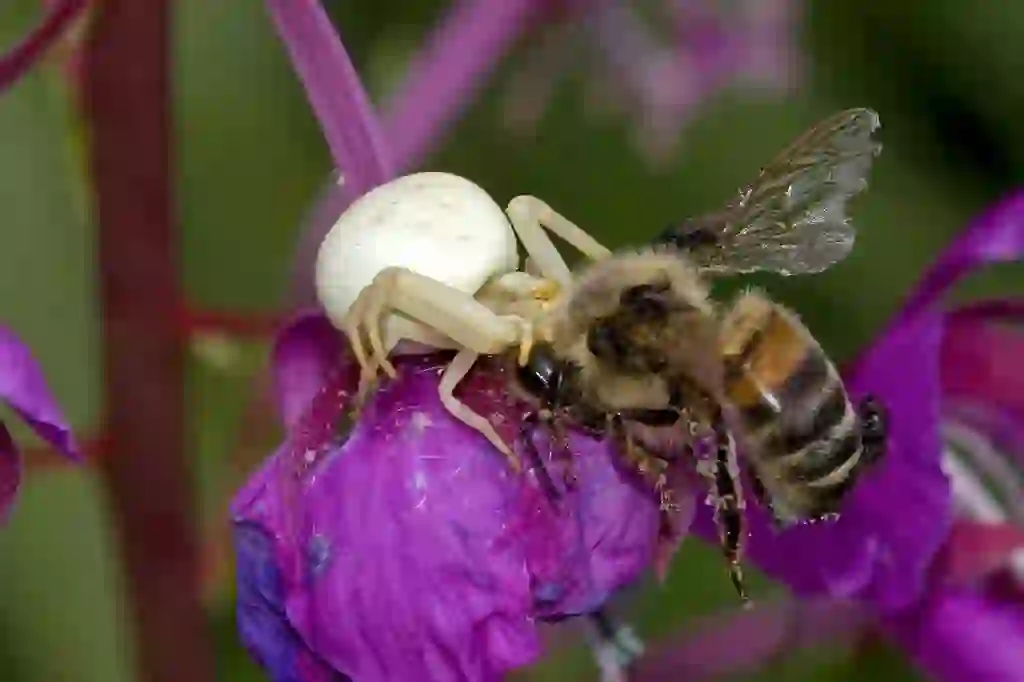
出典:https://pixabay.com/images/id-5100499/
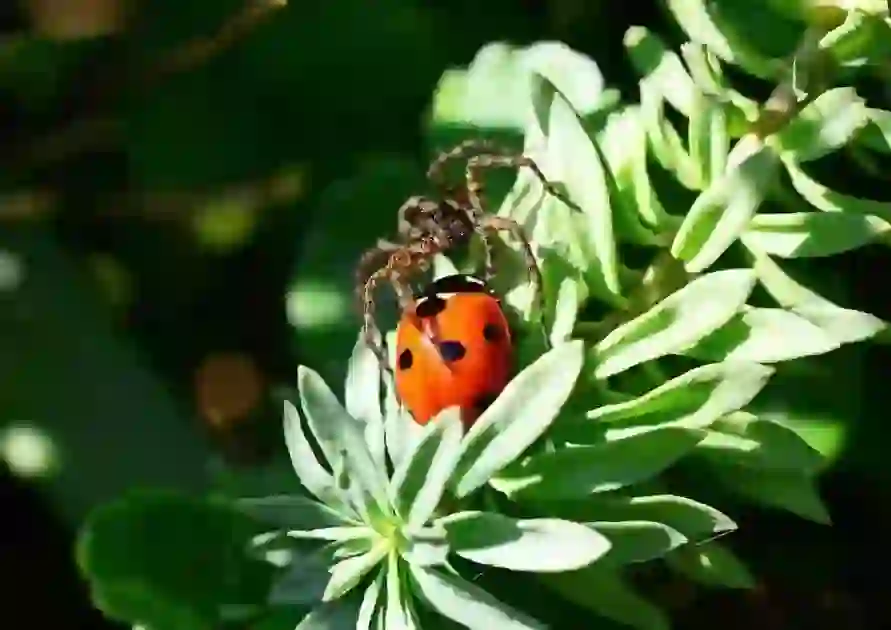
出典:https://pixabay.com/images/id-326574/
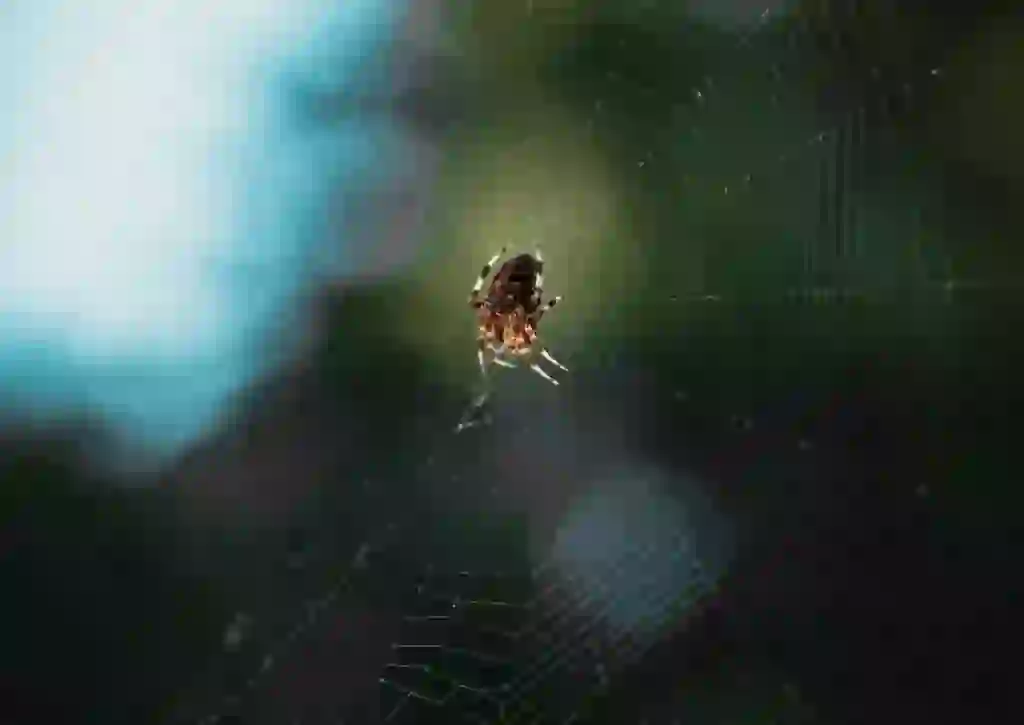
出典:https://unsplash.com/photos/3mDKfyjYUpc
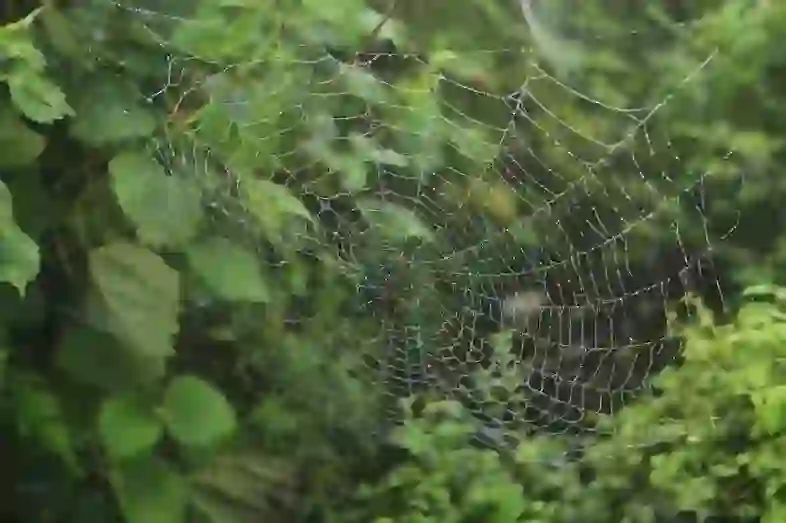
出典:https://pixabay.com/images/id-4470734/

enemy
出典:https://pixabay.com/images/id-300513/

enemy
出典:https://pixabay.com/images/id-289798/
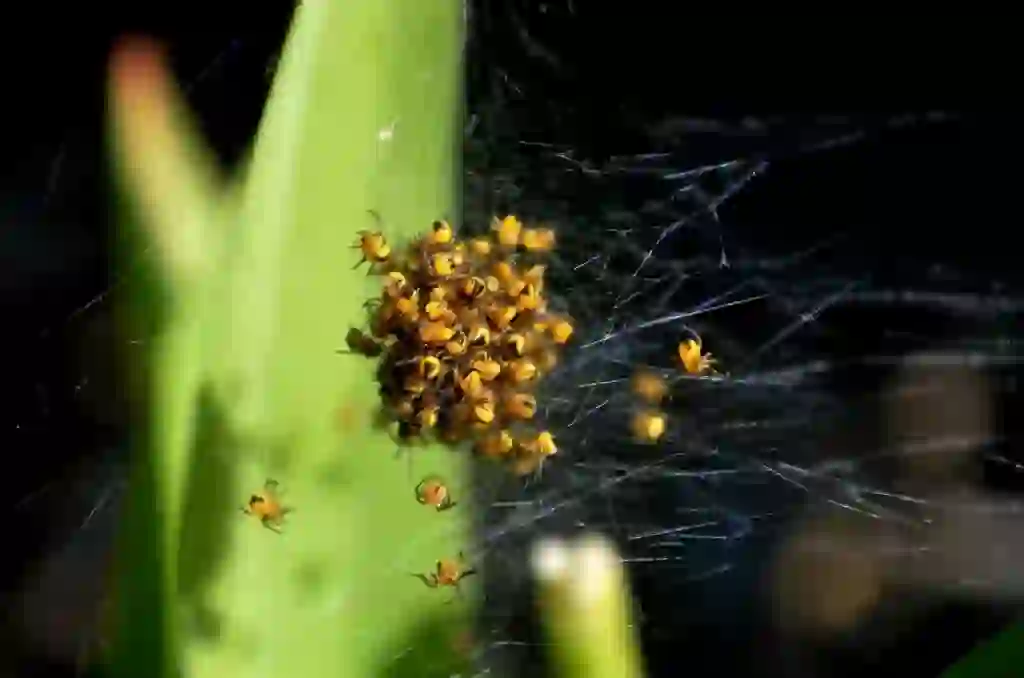
出典:https://pixabay.com/images/id-5215053/

出典:https://pixabay.com/images/id-281142/

Help Enrich Our Animalbook.jp with Your Media!
We are constantly looking to expand and enrich our Animalbook.jp with amazing photos and videos of animals. If you have any media that you'd like to share, please contribute and help us showcase the beauty and diversity of the animal kingdom. Your submissions will be credited and featured in our encyclopedia, reaching a wide audience of animal lovers.


















